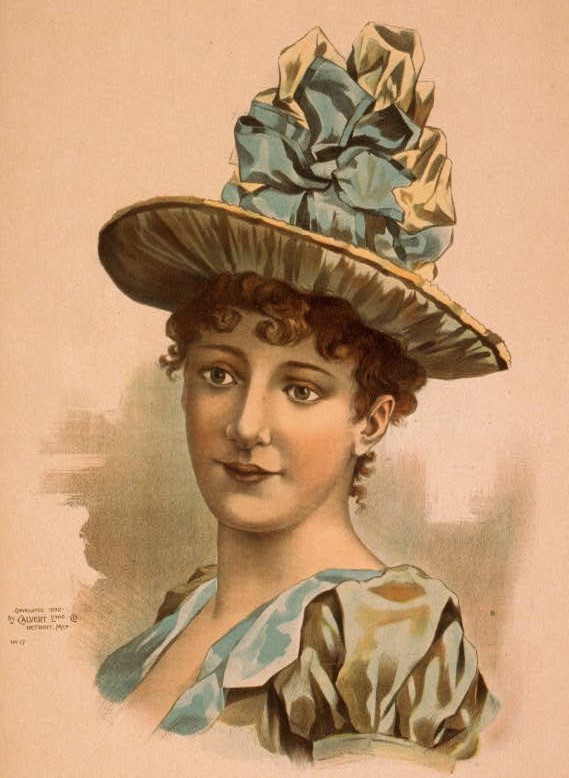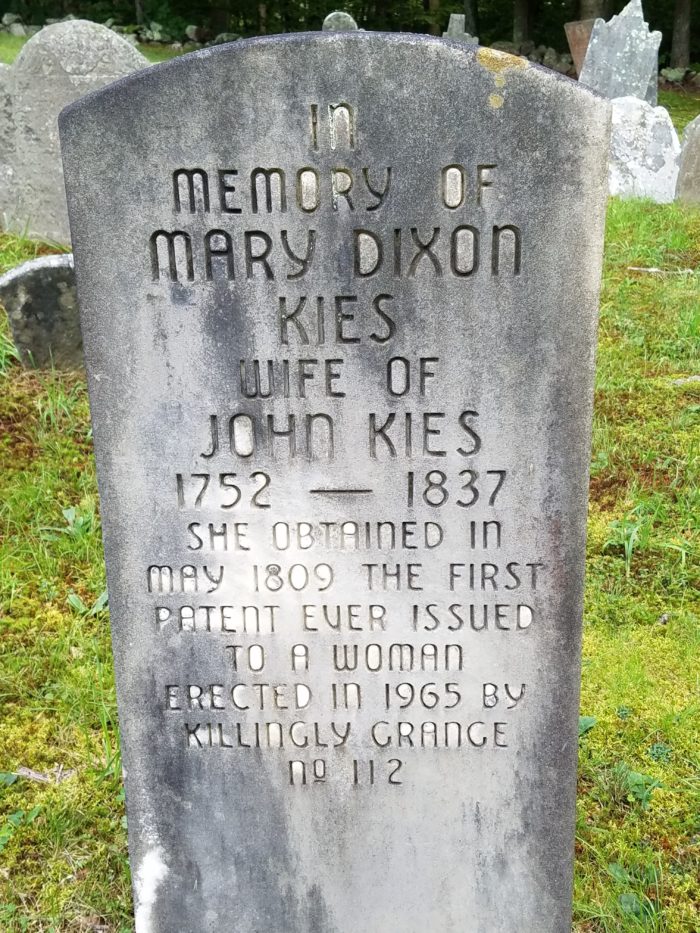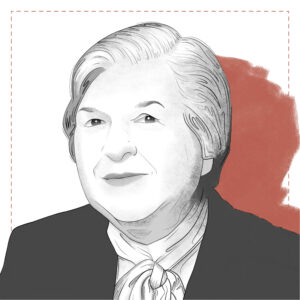Hannah Wilkinson Slater and Mary Dixon Kies | Profiles in Sewing History
Discover how the first women to receive U.S. patents created advancements in the sewing industry.
Learn about two trailblazers in this installment of the Profiles in Sewing History series: Hannah Wilkinson Slater and Mary Dixon Kies. They were the first women to receive U.S. patents. These women, and so many others before them, made significant inventions. It wasn’t until the Patent Act of 1790, however, that women were finally able to apply for and receive patents. Previously, only men were given this right in the United States.
We focus on both individuals, as there is uncertainty as to which was the first woman to receive a patent in the United States. While Hannah Wilkinson Slater was issued her patent in 1793, it was made out to “Mrs. Samuel Slater” instead of Hannah. That is why many people consider Mary Dixon Kies to be the first woman to receive a U.S. patent in 1809. Here are their stories.
Hannah Wilkinson Slater
Hannah Wilkinson was born into a Quaker family in Pawtucket, Rhode Island, in 1774. She had five brothers and two sisters. Her mother was Lydia Wilkinson, and her father, Oziel, was a successful businessman. When Hannah was 15 years old, a skilled mill worker from England named Samuel Slater came to live with her family. Samuel had just taken a job working at a mill in Rhode Island with Moses Brown, Oziel’s business partner and Moses suggested Samuel stay at the Wilkinson home.
Samuel was 21 years old at the time and came to the United States in 1789 hoping to use the vast knowledge he absorbed while working in British mills to create replicas of cotton spinning machines in the States. That’s exactly what he did. Samuel is credited with building the first water-powered cotton mill in the United States, and President Andrew Jackson dubbed him the Father of American Manufacturers.

Although work was a priority for Samuel, he still managed to fall in love with Hannah while creating the mill, and eventually the two married. In 1793, Samuel showed Hannah some cotton yarn he intended to use to make cloth. Hannah had a different idea for using the cotton, however. She and her sister decided to spin two strands of cotton yarn into thread using a hand spinning wheel. At the time, linen was the only thread used for sewing, and it was not strong.
This new method of producing stronger, smoother thread was a game changer. Hannah applied for a patent and received it that same year under the name “Mrs. Samuel Slater.” In 1798, Samuel and Oziel manufactured the thread as business partners under the name Samuel Slater and Company. They later expanded their operations from Rhode Island to Massachusetts, New Hampshire, and Connecticut.
The aftermath
Hannah’s invention wasn’t the only way she improved the lives of others around her. She lived a life full of activism and community service that inspired her family for generations. She also gave birth to 10 children. But in 1812, she died from complications during childbirth at age 37. To learn more about Hannah and her family’s business, visit the Slater Mill in person here.
Mary Dixon Kies
Mary Dixon, a Killingly, Connecticut, native was born on March 21, 1752. She married Isaac Pike I and had a son, Isaac Pike II, in 1770. After her husband died, however, Mary remarried. She and her second husband, John Kies, had a son named Daniel.
Mary’s patent story came much later in life than Hannah’s. However, her timing couldn’t have been better. The year was 1807. Napoleon was at war with many European nations and the United States was trying to remain a neutral power. It halted trade with Europe and encouraged Americans to start manufacturing products domestically. This included fashion industry products. At the time, straw hats were popular, as women wore them while working outside in fields.
Good timing yields success
Mary created a process for weaving straw with silk or thread to produce these fashionable hats and bonnets locally. On May 5, 1809, she received what some believe was the first U.S. patent issued to a woman for this process. This new hat-making technique allowed Mary to make and sell exquisite women’s hats. President James Madison’s wife, Dolley Madison, even wrote to Mary thanking her for boosting the U.S. hat business. The industry thrived, so much so that about $500,000 worth of straw hats were made in Massachusetts in 1810. Surprisingly, the industry continued to prosper during the War of 1812.

While Mary tried to profit from this technique, fashions inevitably changed and the process became obsolete. Eventually, Mary went to live with her son Daniel in Brooklyn. She died in 1837 at age 85, with little money to her name. Furthermore, Mary’s patent file, along with thousands of others, was destroyed in a fire at the U.S. Patent Office in 1836. This is another reason that the first woman to receive a U.S. patent is unclear.
Making history
Although Mary’s success came to an end early, her legacy is recognized today. In 1965, members of Killingly Grange No. 112 paid to have Mary’s headstone engraved at the Old South Killingly cemetery to honor Mary as the first woman to receive a U.S. patent. She was inducted into the National Inventors Hall of Fame in 2006 for her major achievement.

A lasting impression
Regardless of whether Hannah or Mary was the first woman to receive a U.S. patent, each made an impact on the fashion industry and inspired women to be creative and think outside the box. In fact, as of 2016, more than 12 percent of all U.S. patent applications were filed by women and hundreds of thousands of women receive U.S. patents each year.
Did you know that the first U.S. patents issued to women were for sewing inventions? Do you think Hannah should be considered the first woman to receive a patent even though one was issued earlier to Mrs. Samuel Slater? Please share your thoughts in the comments below.
Click here for additional installments of Profiles in Sewing History, a Threads series about the lesser known individuals who made a difference in the world of fashion and sewing.
Sources:
Blakemore, Erin. “Meet Mary Kies, America’s First Woman to Become a Patent Holder.” Smithsonian.com, Smithsonian Institution, 5 May 2016, www.smithsonianmag.com/smart-news/meet-mary-kies-americas-first-woman-become-patent-holder-180959008/?no-ist.
“First Women Inventors.” History of American Women, 24 May 2020, www.womenhistoryblog.com/2016/01/first-women-inventors.html.
“Important People of the Valley.” National Parks Service, U.S. Department of the Interior, Oct. 2020, www.nps.gov/blrv/learn/historyculture/people.htm.
Laurence, Anya. “Mary Dixon Kies; One of the First American Women to be Granted a Patent.” CT Old House.com, www.ctoldhouse.com/Mary-Dixon-Kies.html.
“Mary (Dixon) Kies.” Killingly Historical and Genealogical Society, 2020, www.killinglyhistorical.org/museum/online-journals/vol-7-2005-khs-online-journal/mary-dixon-kies.
“Mary Kies.” History of American Women, 2 Apr. 2017, www.womenhistoryblog.com/2011/11/mary-kies.html.
“Mary Kies.” Lemelson, lemelson.mit.edu/resources/mary-kies.
Office of the Chief Economist at the U.S. Patent and Trademark Office. “PROGRESS AND POTENTIAL: A Profile of Women Inventors on U.S. Patents.” United States Patent And Trademark Office, Feb. 2019, www.uspto.gov/sites/default/files/documents/Progress-and-Potential.pdf.
“Samuel Slater Builds The First Factory.” Encyclopedia.com, 20 Oct. 2020, www.encyclopedia.com/people/social-sciences-and-law/business-leaders/samuel-slater.




































I am thoroughly enjoying these stories. Where would we be without cotton thread? And I’d love to see a description for threading silk through straw. I can imagine a half dozen applications right off the bat!